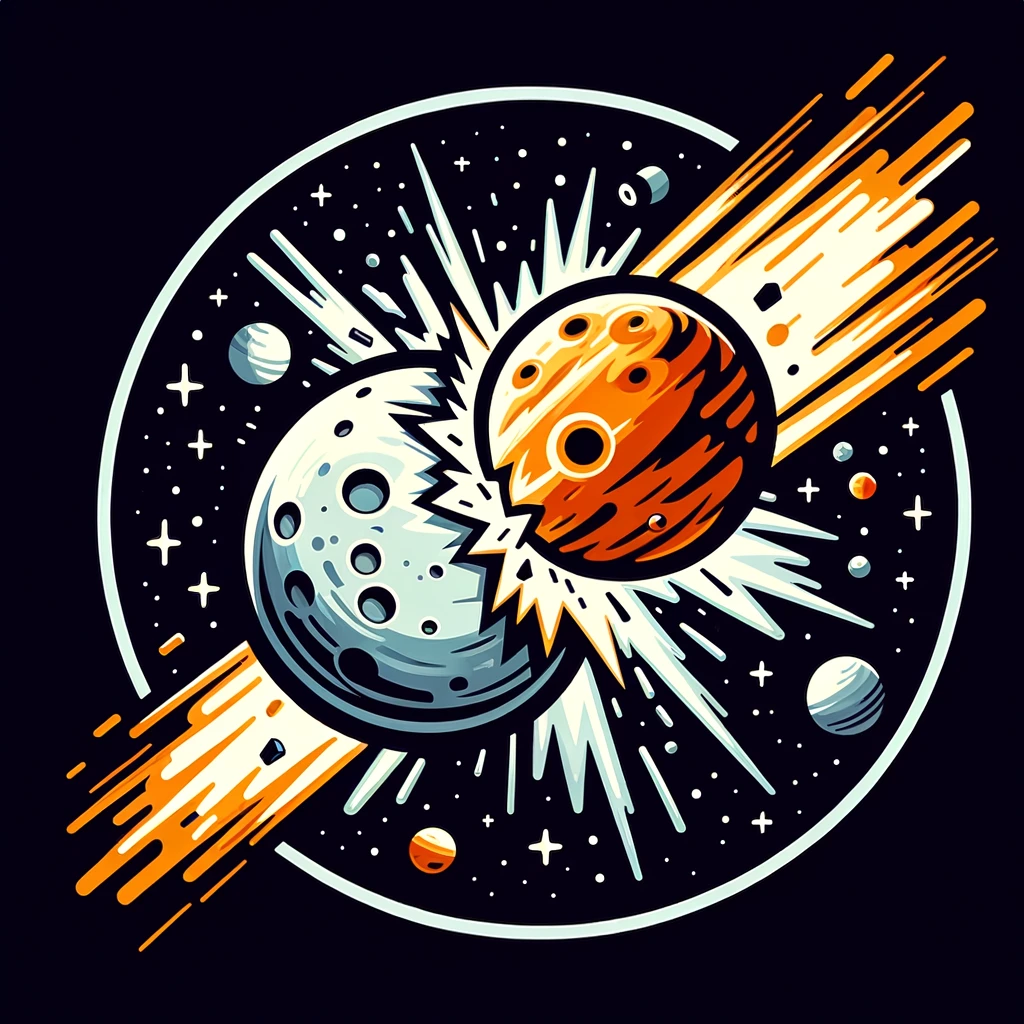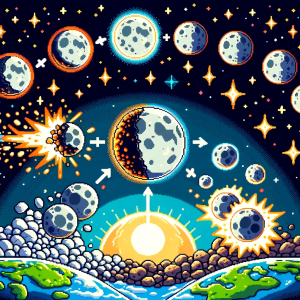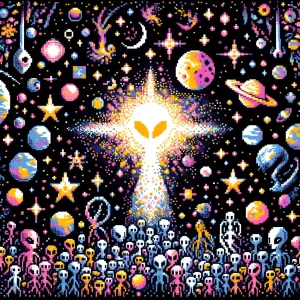
Exploring the Universe’s Architectural Wonders: Giant Impacts in Planet Formation
Have you ever wondered how our planets, with their distinct characteristics, came into being? The Role of Giant Impacts in Planet Formation, dives into the heart of this cosmic mystery. This piece aims to demystify these complex ideas for the everyday reader, illuminating how colossal cosmic collisions have shaped our solar system and beyond.
The Power of Colossal Collisions
Imagine two cosmic titans clashing in the void of space, merging or rebuffing each other. These monumental events, known as giant impacts, occur during the final stages of planet formation. They can drastically alter the size, composition, and even the orbital paths of planets. Think of the creation of our Moon or Mercury’s peculiar large core – these are likely the outcomes of such celestial clashes.
The Role of Computer Simulations
Understanding these spectacular events relies heavily on advanced computer simulations. These digital experiments allow scientists to recreate and study the varied outcomes of these impacts. From planets merging into larger bodies to the stripping away of planetary crusts, simulations provide critical insights into the multitude of possible outcomes.
Collision Scenarios and Their Effects
Giant impacts are not one-size-fits-all events. The results can vary dramatically depending on the size, velocity, and angle of the impacting bodies. For instance, when planets of similar size collide, they could either merge or escape each other’s gravitational pull. These encounters can dramatically change their respective masses, densities, and even their paths around the sun.
The Interplay of Probability and Chaos in Planet Formation
One of the most intriguing aspects of these cosmic collisions is the role of chance. Similar sequences of impacts can result in remarkably similar planets. This randomness, underpinned by gravitational interactions, adds a layer of complexity to our understanding of planetary formation. It’s like a cosmic lottery, where the outcome depends on a mix of probabilities and the chaotic nature of space.
Bridging Theory and Observation
A key focus of current research is to link these theoretical models with real-world observations. By applying probability theory and harnessing advancements in computing, scientists are getting better at interpreting the remnants of these giant impacts. This approach holds promise in unraveling the histories of collisions that have shaped various celestial bodies.
Giant Impacts: The Architects of Planetary Diversity
The diversity we see in planetary compositions, both in our solar system and beyond, can often be traced back to the aftermath of giant impacts. These events can explain why some planets are rich in certain elements or possess unique physical characteristics.
Concluding Thoughts
The study of giant impacts offers a fascinating glimpse into the cosmic forces that have shaped our universe. It’s a field that continues to evolve, driven by technological advancements and a deeper understanding of the complexities of space.
As we continue to explore and understand these titanic forces, we stand on the brink of unlocking more secrets of our solar system’s formation and the diverse characteristics of the exoplanets beyond.
Nurture Your Scientific Curiosity
Feed your curiosity with ‘This Week in Science’! Our newsletter is a weekly feast of the latest scientific research and inspiring discoveries, perfectly seasoned for educators and avid learners. By subscribing, you tap into a rich source of knowledge that enhances your teaching and learning journey. There’s no charge to subscribe – just a world of science waiting to be explored. Start your journey today toward a more enriching and active engagement with the wonders of science.



